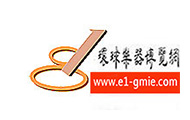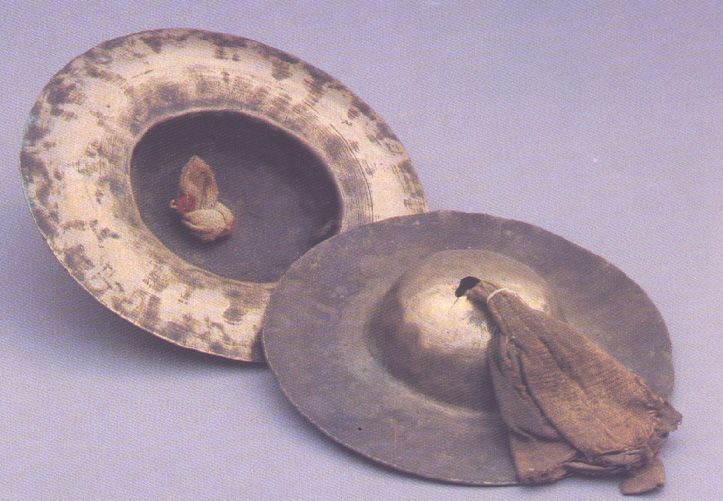钹
击奏体鸣乐器。用响铜制。约公元四世纪从印度传入我国,隋唐时期普遍采用。敲奏时,两手各持一枚,相对合击。有大小多种形制,用于京剧的钹称“京钹”,发音清脆,铿锵有力。也用于其他地方戏的伴奏或器乐合奏,是民间喜庆锣鼓“四大件”(鼓、大锣、小锣、钹)之一。也用作佛教法器。
钹在我国满、蒙古、维吾尔、保安、藏、羌、彝、傣、白、佤、哈尼、纳西、景颇、阿昌、苗、壮、土家、京、黎等少数民族中都有流行。常用于歌舞和地方戏的伴奏。
BO: CYMBALS
Struck idiophone. Cymbals of this type are made of high-tin bronze. It came into China from India in about the 4th century, and was widely used in the Sui and Tang Dynasties (581~907). The performer, with one piece in each hand, strikes the pair together. Various versions can be found. The type for Beijing opera is called jingbo, clear and forceful in tone quality. It is also used in other regional opera genres and instrumental ensembles, as one of the four major instruments (drum, large and small gongs, and cymbals) in folk jubilant gong and drum music. Besides, it is also used as a Buddhist instrument.
The bo cymbals can be seen in the accompaniment of singing and dancing and local operas in such minority peoples as Man, Mongol, Uighur, Bao-an, Tibet, Qiang, Yi, Thai, Bai, Wa, Hani, Naxi, Jingpo, Achang, Miao, Zhuang, Tujia, Jing, and Li.
未经允许不得转载:環球樂器博览网 » 钹 BO: CYMBALS
 環球樂器博览网
環球樂器博览网
评论前必须登录!
登陆 注册